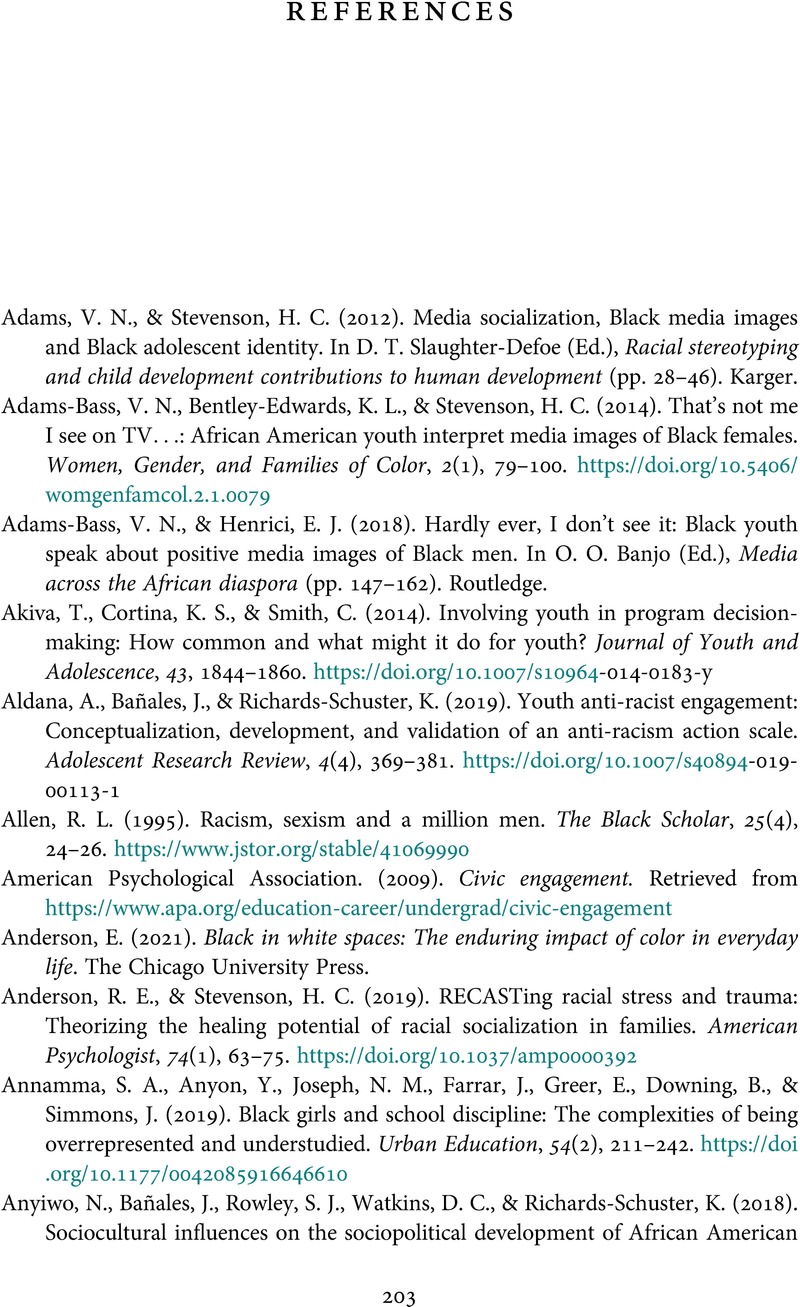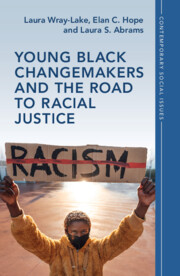Book contents
- Young Black Changemakers and the Road to Racial Justice
- Contemporary Social Issues
- Young Black Changemakers and the Road to Racial Justice
- Copyright page
- Contents
- Illustrations
- Tables
- Contributors
- 1 Introduction
- 2 Civic Actions with a Purpose
- 3 Changemaking in Non-Black School Spaces
- 4 Identity and Changemaking
- 5 Launching Points
- 6 Families and Young Black Changemaking
- 7 Organizations and Black Youth Agency
- 8 Summer 2020
- 9 Freedom Dreaming
- Book part
- References
- Index
- References
References
Published online by Cambridge University Press: 08 February 2024
- Young Black Changemakers and the Road to Racial Justice
- Contemporary Social Issues
- Young Black Changemakers and the Road to Racial Justice
- Copyright page
- Contents
- Illustrations
- Tables
- Contributors
- 1 Introduction
- 2 Civic Actions with a Purpose
- 3 Changemaking in Non-Black School Spaces
- 4 Identity and Changemaking
- 5 Launching Points
- 6 Families and Young Black Changemaking
- 7 Organizations and Black Youth Agency
- 8 Summer 2020
- 9 Freedom Dreaming
- Book part
- References
- Index
- References
Summary

- Type
- Chapter
- Information
- Young Black Changemakers and the Road to Racial Justice , pp. 203 - 224Publisher: Cambridge University PressPrint publication year: 2024



